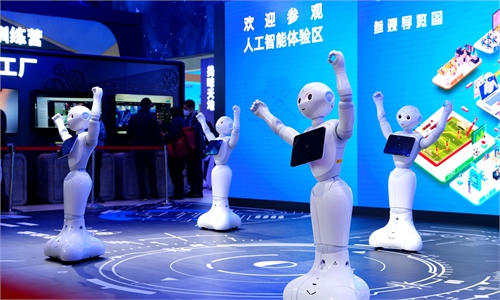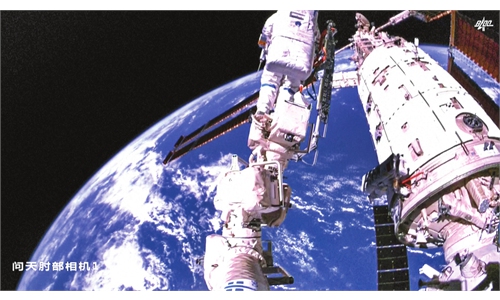Chinese scientists develop self-propelled robots to clean up microplastics
Advantages in cost and low pollution make it suitable for more scenarios

A crab roams on a beach polluted with plastic pellets. Photos: VCG
A group of Chinese scientists has developed a kind of micro-robot powered by ion exchanges to remove microplastics and nanoplastics (MNPs) from water, according to Jinan University, one of its developers.
The robot is 20 to 100 microns in diameter, which is thinner than a human hair. It has an innovated means of obtaining energy, making use of exchanges with impurity ions in the water, and can work without additional energy input.
The research, published recently in the journal Science Advances, states that MNP pollution in non-marine waters poses a great threat to the global ecosystem. However, existing strategies, such as chemical flocculation and physical filtering, often fail to remove the ultrasmall plastic particles thoroughly.
Seeking a better solution, scientists from the Guangzhou-based Jinan University and the University of Hong Kong designed the micro-robots to remove MNPs from water, taking their inspiration from floor-sweeping robots.
"Floor-sweeping robots can work autonomously on a planned route and sweep the garbage near them, so we thought there could be a similar kind of robot to clean garbage in the water," according to Wang Jizhuang, one of the leading researchers from Jinan University.
The self-propelled robots developed by the group comprise resin spheres with magnetic nanoparticles, and can interact with surrounding particulates during their movements, accomplishing the dynamic removal of MNPs in their path. Each robot has an adsorption range of up to 200 microns in diameter, Wang said.
Meanwhile, the adsorption of plastics in the water induces a fluidic flow around the robots, thus propelling them to move autonomously without other energy input.
Owing to the magnetic components inside, the robots can also be simply collected with a magnet after completing their missions, and can be controlled precisely through a programmable magnetic field, according to Wang.
In their research, the robots were confirmed to show a removal efficiency of more than 90 percent during 100 consecutive missions to remove MNPs with various compositions, sizes and shapes in the water.
It is estimated that every liter of sewage only needs about 5 million micro-robots of this kind to clean up the MNPs present in the water, Wang said, adding that the number is very easy for the micro-robots to achieve in practice.
The group has set further research goals, such as finding ways for the newly-developed robots to simultaneously collect MNPs and degrade them in situ.
It is hoped that the development of the self-propelled robots, with the advantages of affordable cost and minimal secondary pollution, will make them suitable for industrial applications, providing an appealing strategy for the removal of the ultrasmall plastic particles on a large scale, Wang said.
Chinese Institute of Electronics on August 2022 published a robot industry development report estimated that the global market size of robot industry to reach $51.3 billion by the end of 2022, and may break $65 billion yuan in 2024.
The market scale of China's robot industry is estimated to reach $17.4 billion by the end of 2022, with the annual average growth rate between 2017 and 2022 reaching 22 percent, said the report.
The industrial robot has generated a new historic height as being applied into plastic and chemical engineering, metal products and auto manufacturing.
Data from the International Federation of Robotics showed that China's industrial robot market size has been keeping grow in the last five years and will extend the increase trend in 2022 to $8.7 billion, crossing $11 billion in 2024.
Xinhua - Global Times



